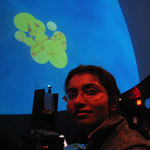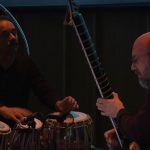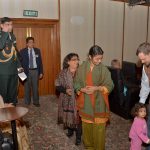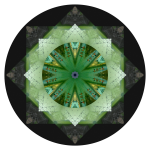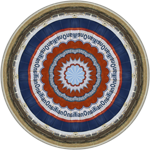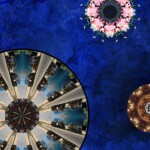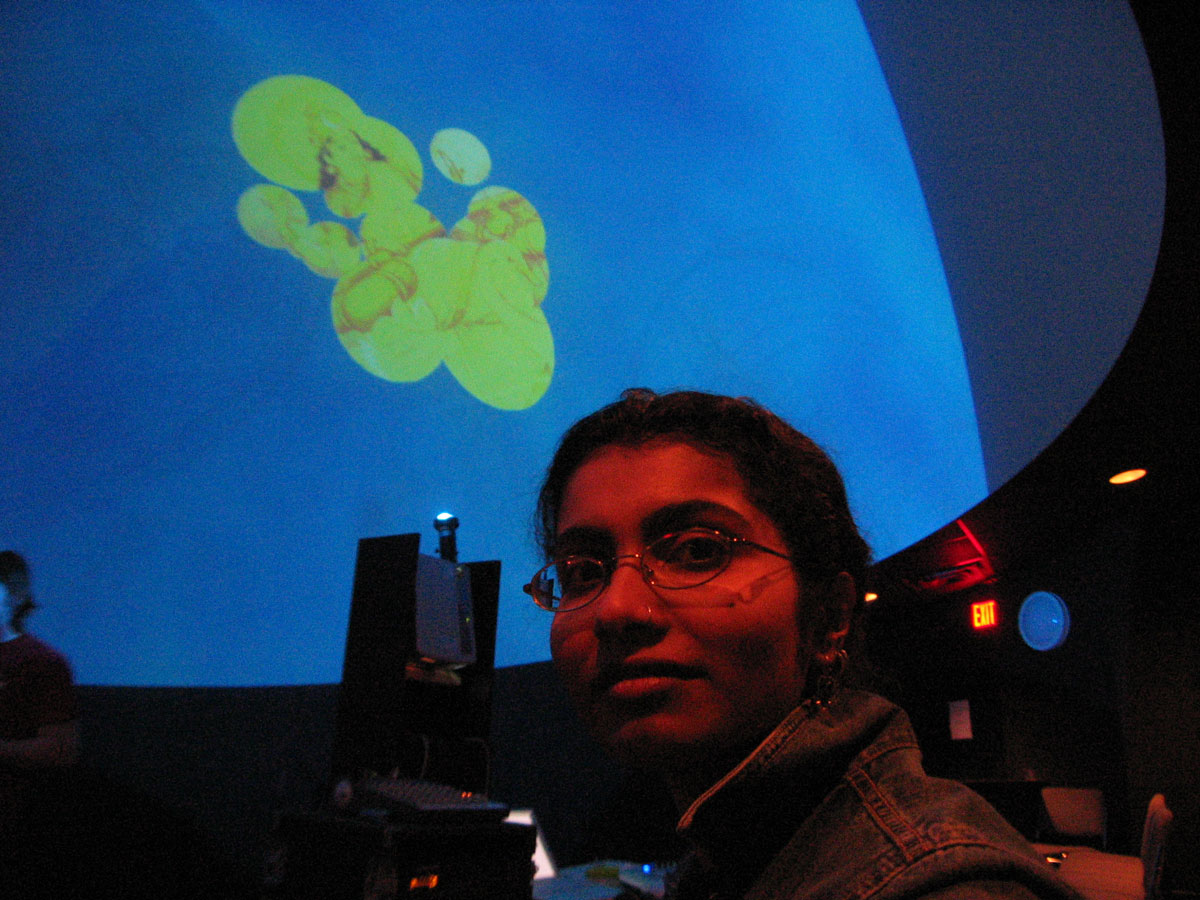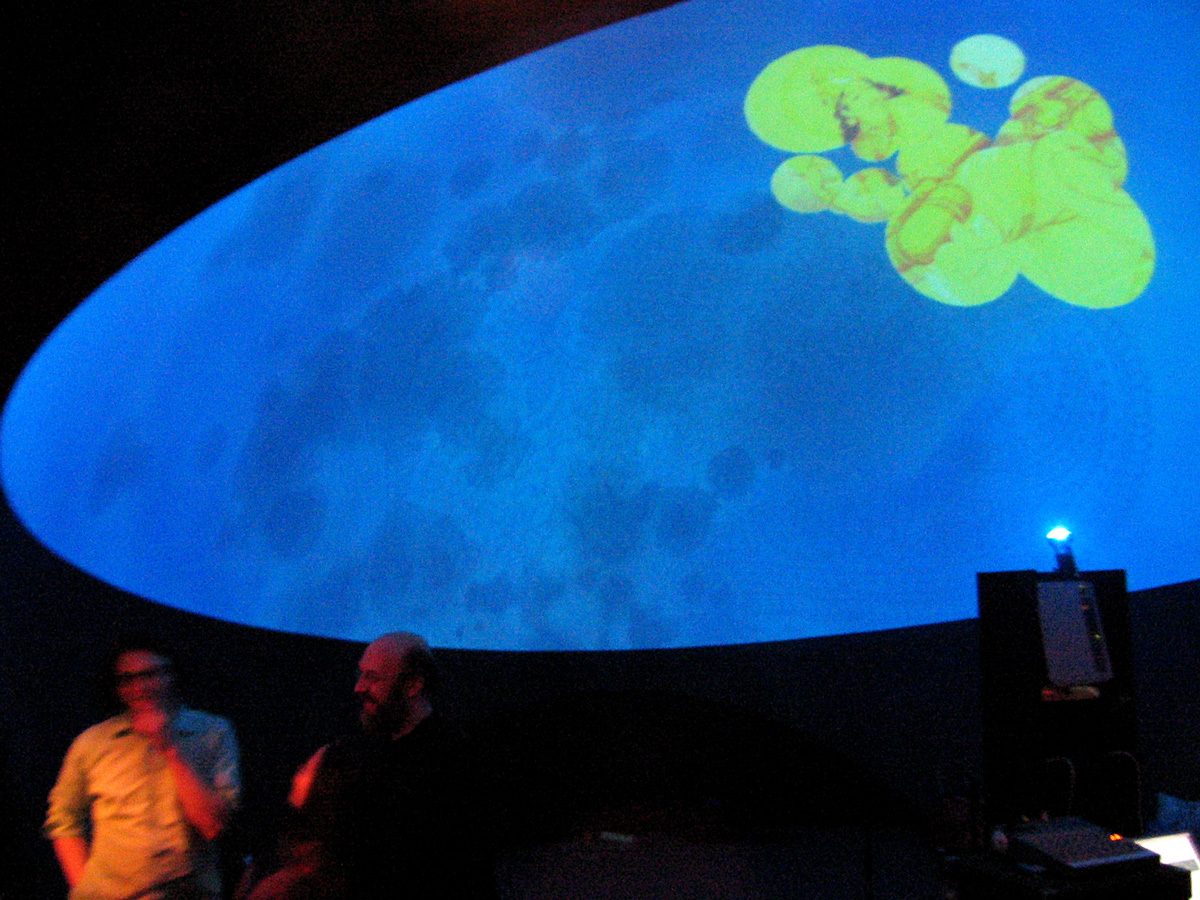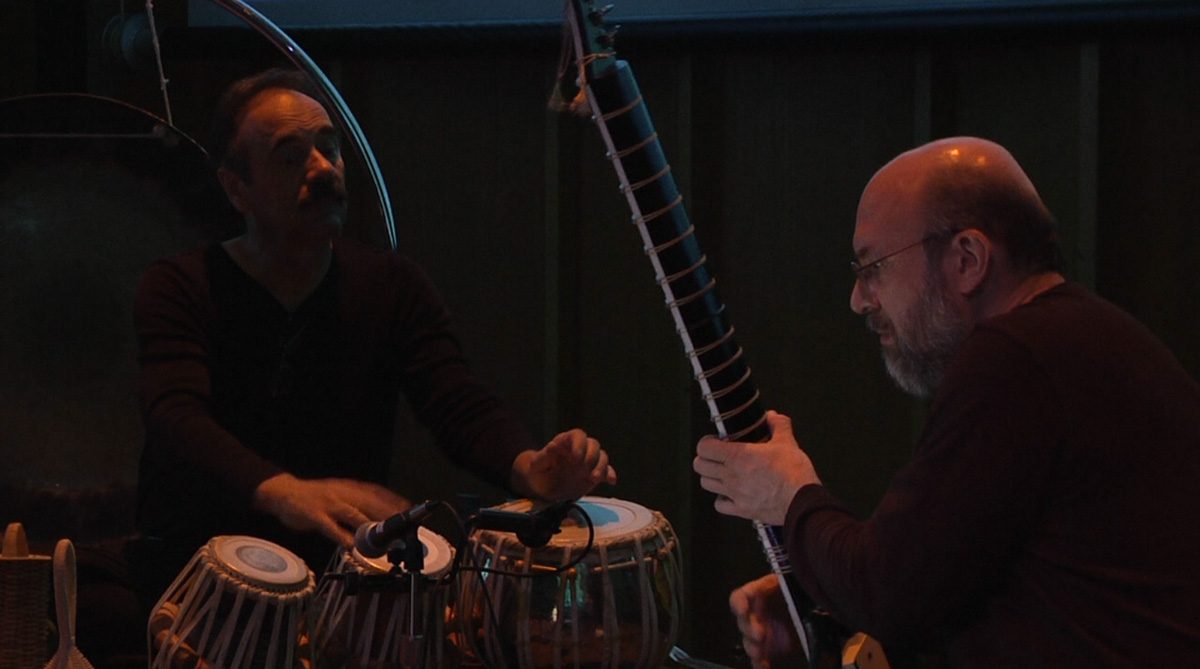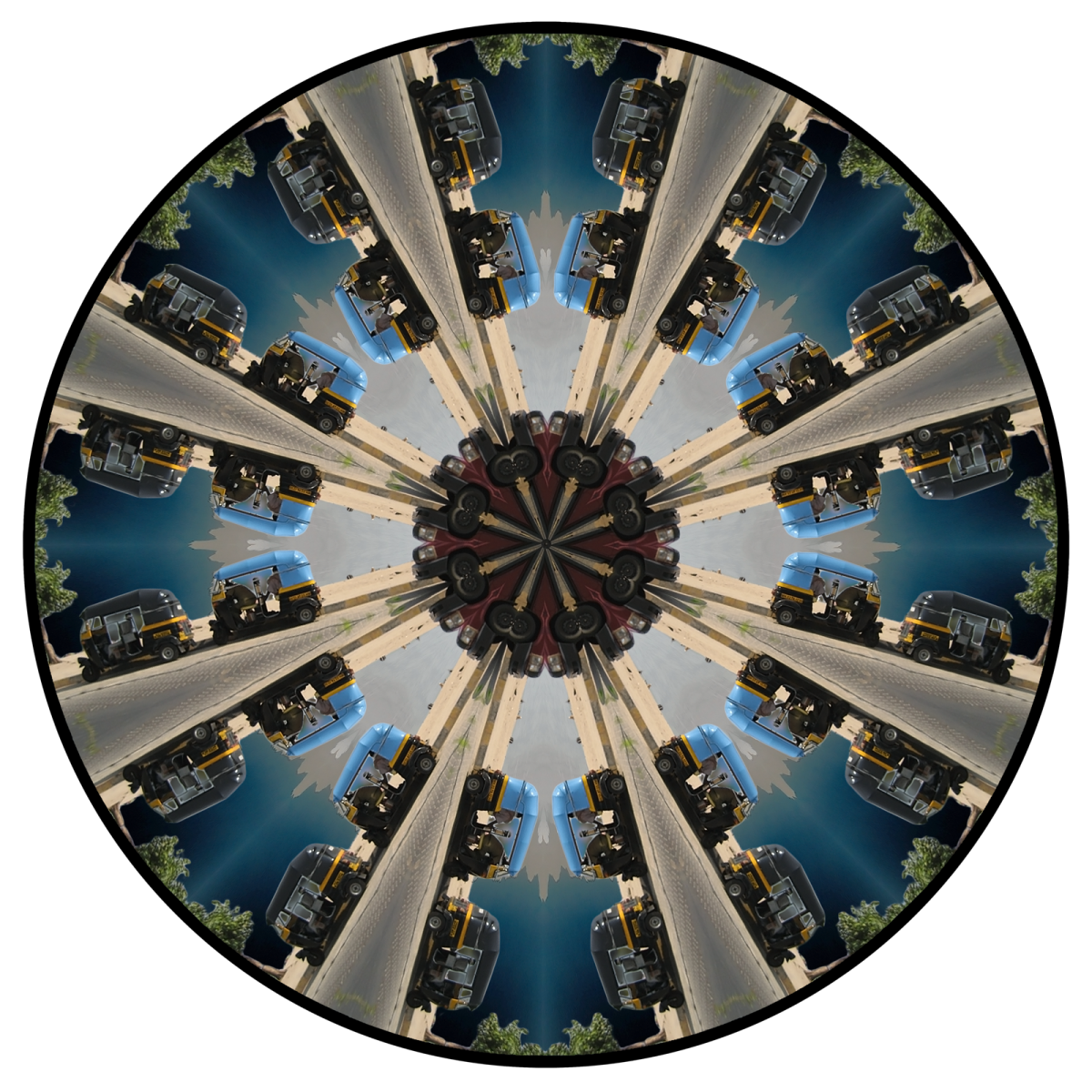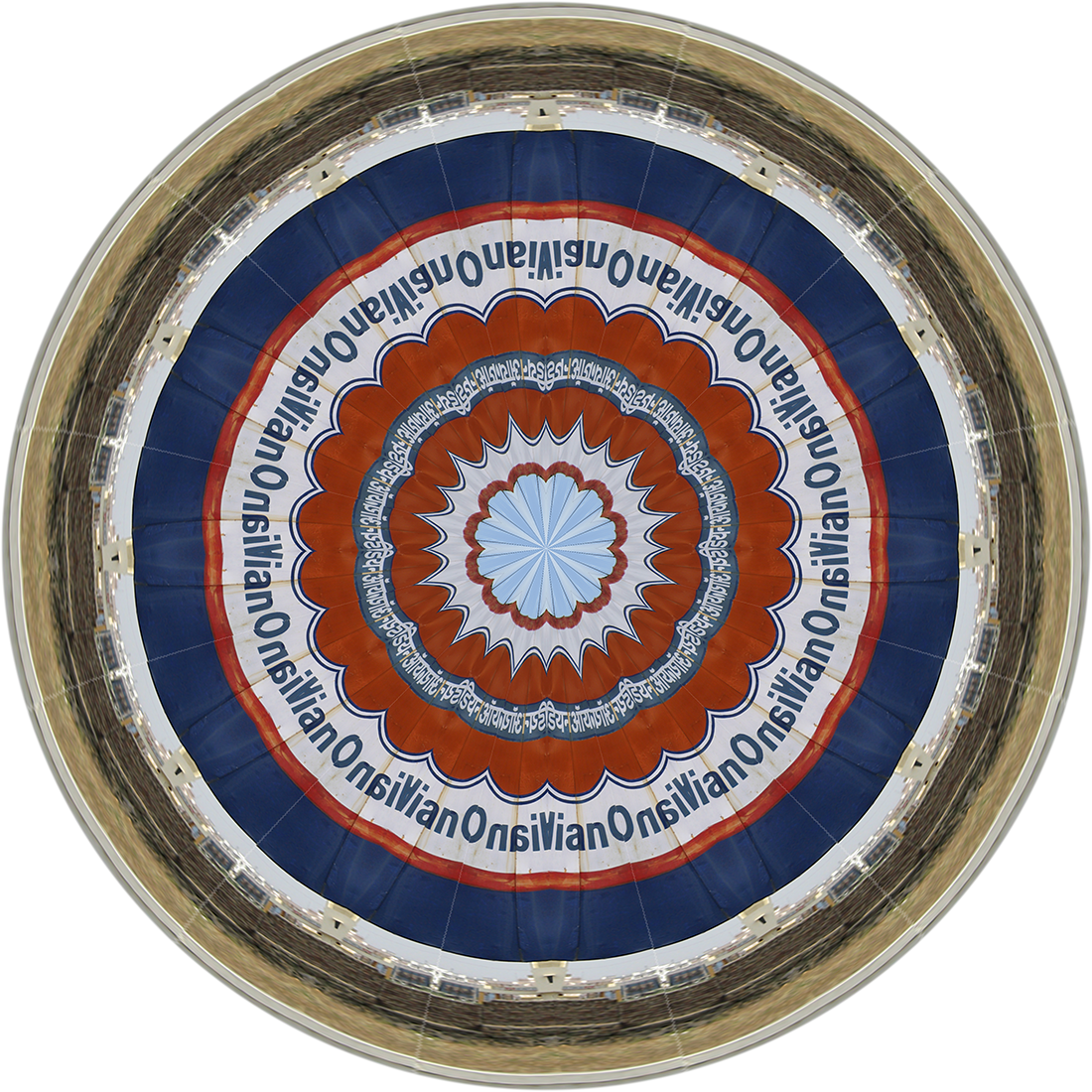Saraswati is in reference to the Hindu Goddess of learning and the arts. Saraswati is referred to as a river goddess, because she is named for a river that once flowed in Northern India. She is often depicted holding The Vedas (the book of universal knowledge), a string of pearls for meditation, a container of water, and the veena, a musical instrument, which, due to its quality of sound and craft, represents perfection in the arts and sciences.
Under Saraswati River was first presented (live) as part of the Domeworks Series at the Children's Museum of Science and Technology in Troy, NY - a presentation of visual and sonic art. The "Under" in the title refers to the fact that the viewers were under the dome. Images representing Saraswati were composited in real-time and projected into the planetarium dome. In addition, Curtis Bahn performed live sitar and dilruba, the sounds from which were synthesized with the vocals of Jayeeta Chowdhury.
Curtis Bahn (extended sitar and electronics) is a composer and improviser who specializes in live interactive electronic performance. Currently he is Associate Professor of Music Composition/ Interactive Performance, and Director of the Graduate Programs in the Arts at Rensselaer Polytechnic Institute in Troy New York. Curtis is a formal student of the sitar (shagird) with virtuoso Ustad Shahid Parvez Khan, and has travelled extensively in India studying and accompanying his guru as the Asian Cultural Council's 2012 "Ralph Samuelson Fellow." He has applied his studies in Indian classical music to contemporary electronic performance, interactive instrument and installation designs, and his performance with the "Machine Orchestra," a mixed human robotic ensemble at CalArts. http://www.arts.rpi.edu/~bahnc2/
Robert Chappell’s (percussion) interest in world percussion has resulted in studies in African drumming with Kwaku Dadey and Indian tabla drumming with Ustad Zakir Hussain and Pandit Swapan Chaudhuri. In 1990 he received an Indo-American Research Fellowship to continue study with Ustad Alla Rakha in Mumbai, India. During the winter of 2004, Chappell spend two months in Trinidad and Tobago, W. Indies researching the unique tassa drumming tradition of TnT. As a result of this research, Northern Illinois University will be the first university in the US with a tassa ensemble. Recently, Chappell has traveled extensively in Costa Rica and established exchanges between NIU and the Instituto Nacional de Música in San José.
Bart Woodstrup's (video) work is often concerned with and inspired by the relationship between nature and technology. While working on a degree in music composition at NIU in 1998 he first learned about Classical Hindustani Music and the relationship between ragas and the time of day and seasons of the year. In 2006, while attending Rensselaer Polytechnic Institute in Troy, NY, Bart was invited to participate in a series of video projections at a planetarium dome. At RPI he was studying with Professor Curtis Bahn who had similar interests in Hindustani Music. Inspired by Devi Saraswati and the river from which she was named, Bart and Curtis composed Under Saraswati River for the “Domeworks Series”.
As installation/presentation:
2014 Rt. 64 Bridge, St. Charles, IL
2013 Currents 2013 Santa Fe International New Media Festival, Santa Fe, NM
2012 The Arts Converge, Jack Olson Gallery, Northern Illinois University, DeKalb, IL
2012 Private Screening, Her Excellency Suvra Mukherjee, Rashtrapati Bhavan, New Delhi, India
2007 Vertical Gallery, Folsom Library, Rensselaer Polytechnic Institute, Troy NY
As performance:
2012 Under Saraswati River, Recital Hall, School of Music, NIU, DeKalb, IL
2006 Under Saraswati River, Children’s Museum of Science and Technology, Troy, NY
